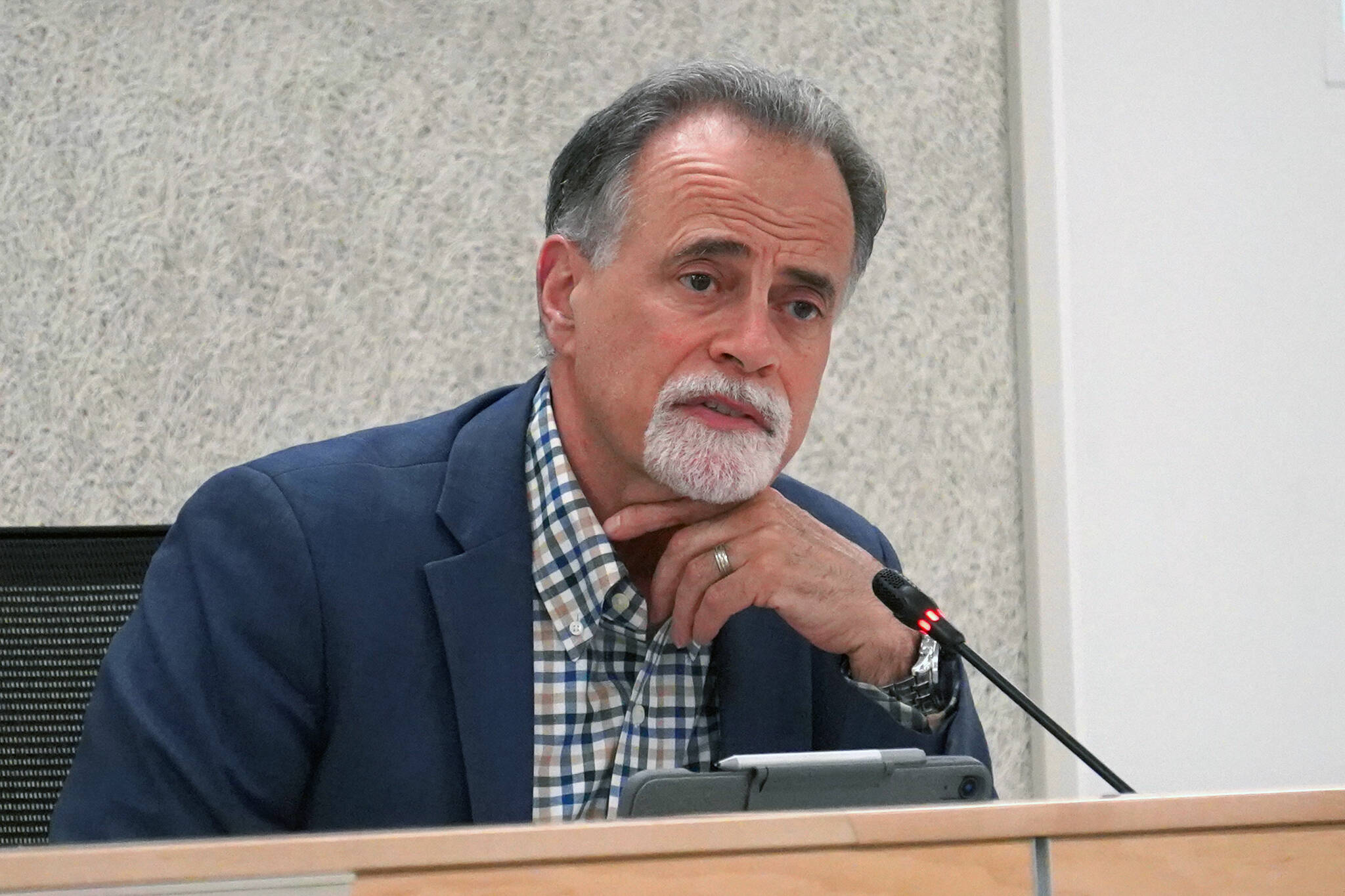The draft budget by Kenai Peninsula Borough Mayor Peter Micciche will include $57 million for the Kenai Peninsula Borough School District, he said Wednesday. That’s roughly $5 million less than KPBSD leadership is requesting, but he said the pressure needs to be on the Alaska Legislature to properly fund education.
At recent meetings of the KPBSD Board of Education, as the body crafts budgets to respond to a $17 million deficit and uncertain state funding, another question has been how much funding the district would receive from the Kenai Peninsula Borough.
The three budget scenarios constructed by the board’s finance committee all assume funding from the borough to the maximum allowable amount, a cap determined based on the borough’s property value. In the budget reduction document, that total is more than $62 million split between appropriated funds and in-kind services. That’s significantly more than the $56 million the borough provided last year when the cap was $58 million.
“It’s a tremendous ask from our borough,” KPBSD Board President Zen Kelly said during a March 25 meeting of the board’s finance committee.
That ask, Micciche said during a Wednesday joint luncheon of the Soldotna and Kenai Chambers of Commerce, is too great. He said the amount of funding the borough provides will be generous, but “I’ve got to look out for the 61,000 people who live here, as well as support the students.”
“We are the most generous second-class borough in the state,” he said. “The funding to the cap mantra is taking the pressure off the Legislature and the governor’s office getting their job done. That doesn’t make sense, because if we funded to the cap every year, we can’t keep up.”
That echoes statements the mayor has made in the past that the borough cannot maintain the level of funding it is providing to its schools forever.
“We simply don’t have the ability to keep up,” he said during a meeting of the Kenai Peninsula Borough Assembly on Feb. 27. “There has to be solutions on the table for not only bringing the cost down but the state being a partner on the fact that the price of an apple today is quite a bit more than it was five years ago. It’s just how real dollars work.”
At the roughly $57 million number, Micciche said Wednesday, the borough will meet “about 96% of the cap,” and leave room for the borough to reduce its property tax mill rate to “give a little relief to taxpayers this year.” The mayor’s budget, which hasn’t been introduced yet, still has to be approved by the Kenai Peninsula Borough Assembly.
While state education funding has remained flat, and the Legislature needs “to work better,” he said the district also needs to make cuts.
“This local pressure to keep every half-full school open doesn’t work,” he said. “There’s no way out of this without getting lean and mean and having full school buildings that can offer the services that our students need.”
There’s room, he said, to provide help in the fall, after the legislative session has concluded.
Reach reporter Jake Dye at jacob.dye@peninsulaclarion.com.

